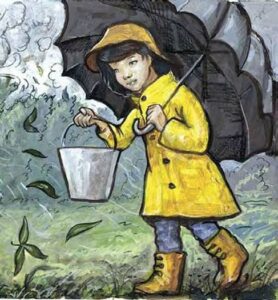Cave Conundrum: Is White-Nose Syndrome Responsible for All Declining Bat Populations?

Hibernating bat populations across the Eastern United States have suffered declines since the 2000s. Little brown bat populations have declined 70 percent or more. Populations of the northern long-eared bat and tricolored bat have declined by 30 percent. The scientists studied these three bat species in their research.
The cause of bat population declines is often assumed to be white-nose syndrome (WNS), a deadly disease caused by a fungal pathogen. Evidence suggests WNS is a serious threat to bat populations. However, research has not yet supported WNS as the only cause of bat population declines. Therefore, the scientists in this study asked: Is WNS the sole cause of these bat population declines, or is there something else causing bat populations to decline?

-
 In this FACTivity, you will predict and observe how diseases spread in populations. Over one class period, you will simulate the spread of the “flu” in your class over 5...
In this FACTivity, you will predict and observe how diseases spread in populations. Over one class period, you will simulate the spread of the “flu” in your class over 5...FACTivity – Cave Conundrum
In this FACTivity, you will predict and observe how diseases spread in populations. Over one class period, you will simulate the spread of the “flu” in your class over 5...
Glossary
View All Glossary-

Sybill Amelon
My most exciting science experience was discovering that even very small bats that weigh only 10 grams (about one third of an ounce) travel long distances every night. We found...View Profile -

Brent Sewall
My favorite science experience is discovering the secret worlds of animals. Many animals, like bats, are hard to find–they often are small, fly fast, move around in the dark, vocalize...View Profile
Standards addressed in this Article:
Social Studies Standards
- People, Places, and Environments
- Science, Technology, and Society
- Time, Continuity, and Change
Note To Educators
The Forest Service's Mission
The Forest Service’s mission is to sustain the health, diversity, and productivity of the Nation’s forests and grasslands to meet the needs of present and future generations. For more than 100 years, our motto has been “caring for the land and serving people.” The Forest Service, an agency of the U.S. Department of Agriculture (USDA), recognizes its responsibility to be engaged in efforts to connect youth to nature and to promote the development of science-based conservation education programs and materials nationwide.

What Is the Natural Inquirer?
Natural Inquirer is a science education resource journal to be used by students in grade 6 and up. Natural Inquirer contains articles describing environmental and natural resource research conducted by Forest Service scientists and their cooperators. These scientific journal articles have been reformatted to meet the needs of middle school students. The articles are easy to understand, are aesthetically pleasing to the eye, contain glossaries, and include hands-on activities. The goal of Natural Inquirer is to stimulate critical reading and thinking about scientific inquiry and investigation while teaching about ecology, the natural environment, and natural resources.

-
Meet the Scientists
Introduces students to the scientists who did the research. This section may be used in a discussion about careers in science.
-
What Kinds of Scientist Did This Research?
Introduces students to the scientific disciplines of the scientists who conducted the research.
-
Thinking About Science
Introduces something new about the scientific process, such as a scientific habit of mind or procedures used in scientific studies.
-
Thinking About the Environment
Introduces the environmental topic being addressed in the research.
-
Introduction
Introduces the problem or question that the research addresses.
-
Method
Describes the method the scientists used to collect and analyze their data.
-
Findings & Discussion
Describes the results of the analysis. Addresses the findings and places them into the context of the original problem or question.
-
Reflection Section
Presents questions aimed at stimulating critical thinking about what has been read or predicting what might be presented in the next section. These questions are placed at the end of each of the main article sections.
-
Number Crunches
Presents an easy math problem related to the research.
-
Glossary
Defines potentially new scientific or other terms to students. The first occurrence of a glossary word is bold in the text.
-
Citation
Gives the original article citation with an internet link to the original article.
-
FACTivity
Presents a hands-on activity that emphasizes something presented in the article.
Science Education Standards
You will find a listing of education standards which are addressed by each article at the back of each publication and on our website.
We Welcome Feedback
-
Contact
Jessica Nickelsen
Director, Natural Inquirer program -
Email
Lessons
-
 In this lesson plan, students will complete a guided reading activity while reading their chosen article. As they read, they will complete a double-entry graphic organizer where they will note...
In this lesson plan, students will complete a guided reading activity while reading their chosen article. As they read, they will complete a double-entry graphic organizer where they will note...Lesson Plan – Haikus
In this lesson plan, students will complete a guided reading activity while reading their chosen article. As they read, they will complete a double-entry graphic organizer where they will note...
Education Files
Project Learning Tree
If you are a trained Project Learning Tree educator, you may use “Life on the Edge,” “Dynamic Duos,” “Our Changing World,” and “Earth Manners” as additional resources.
























